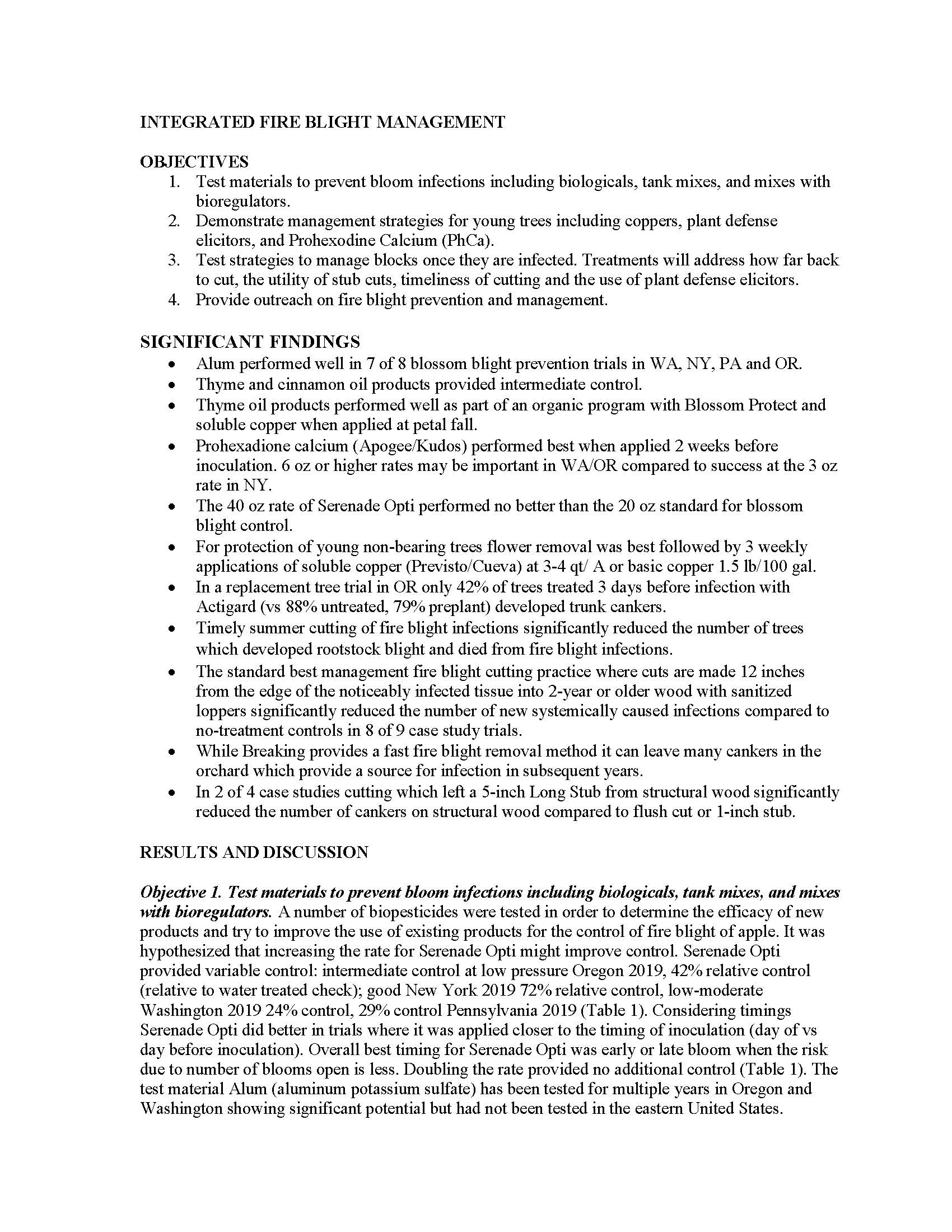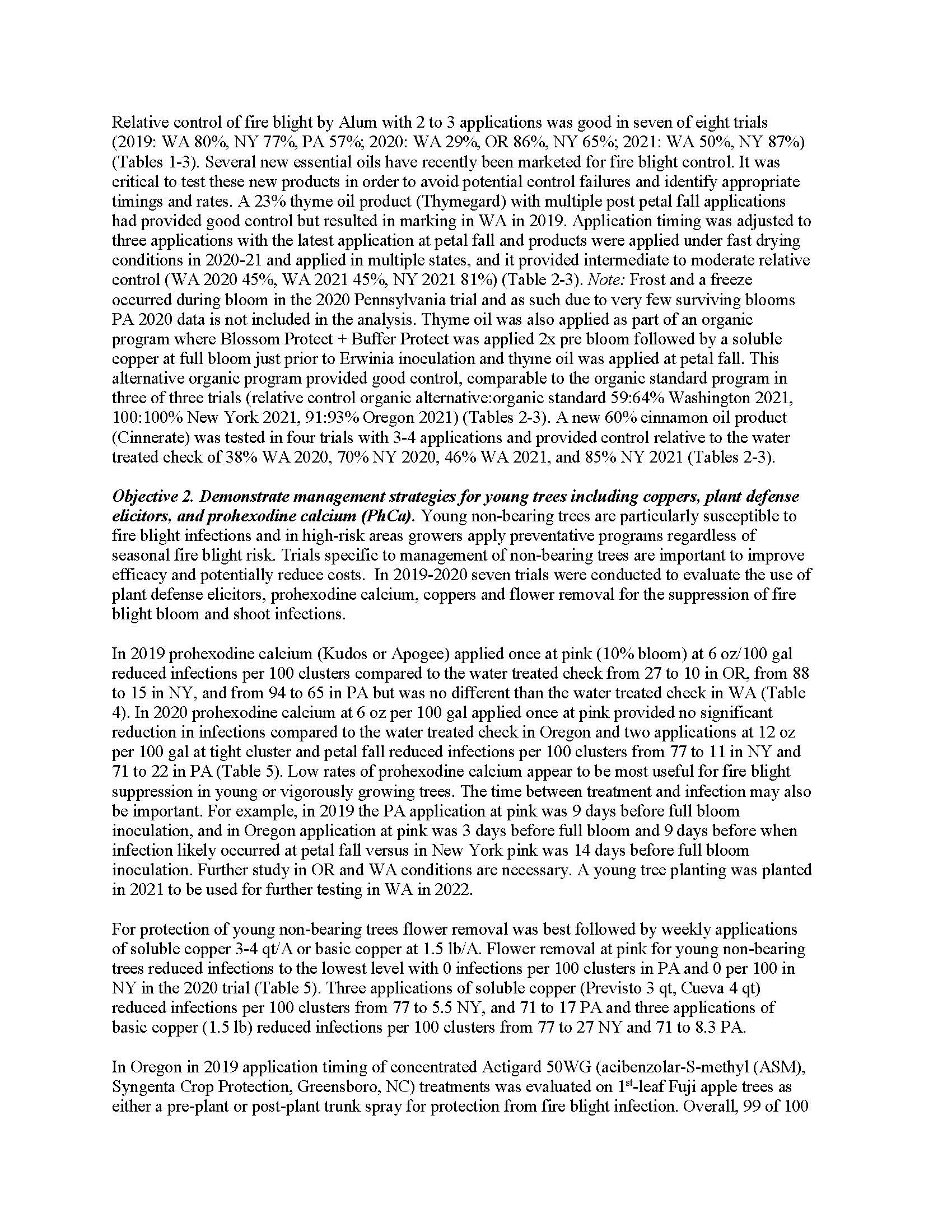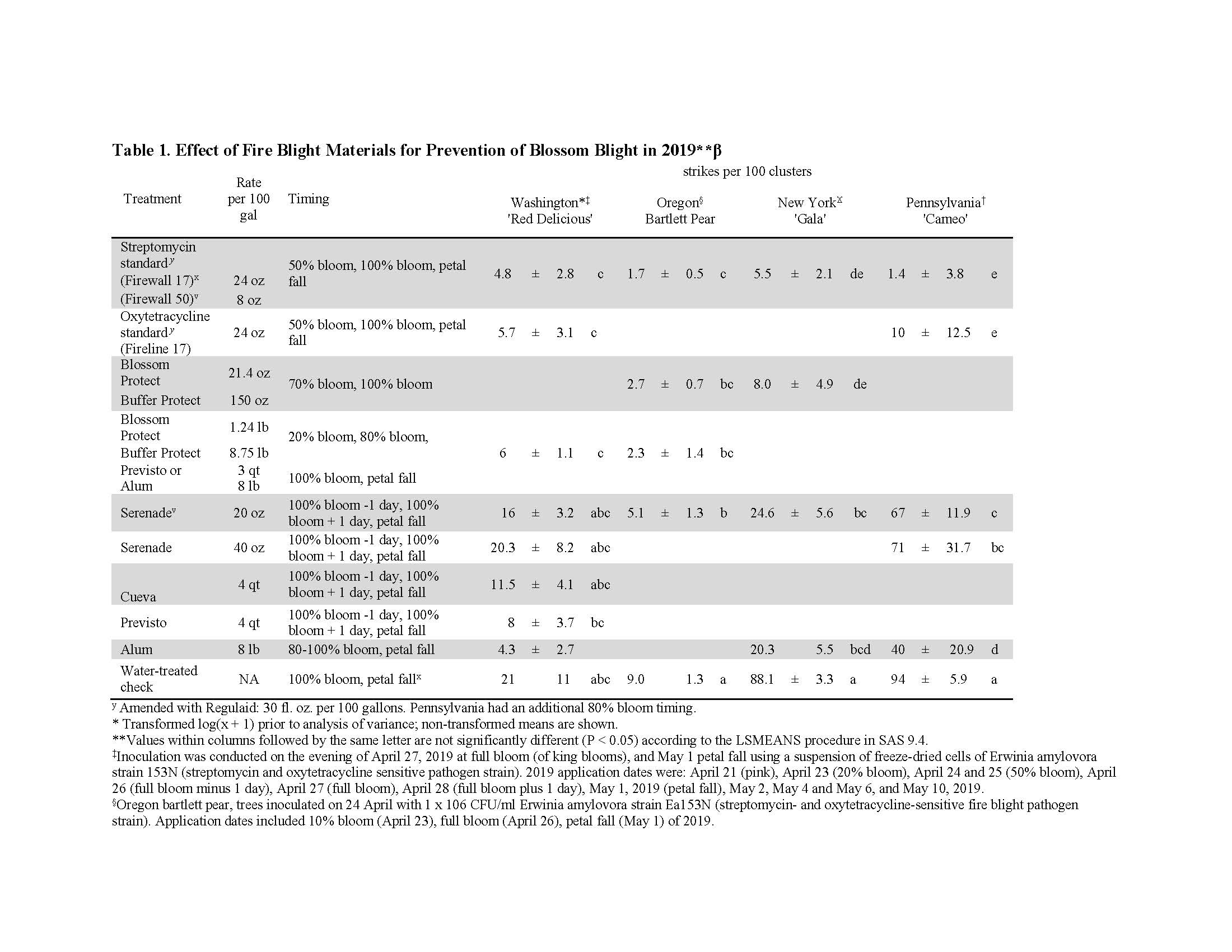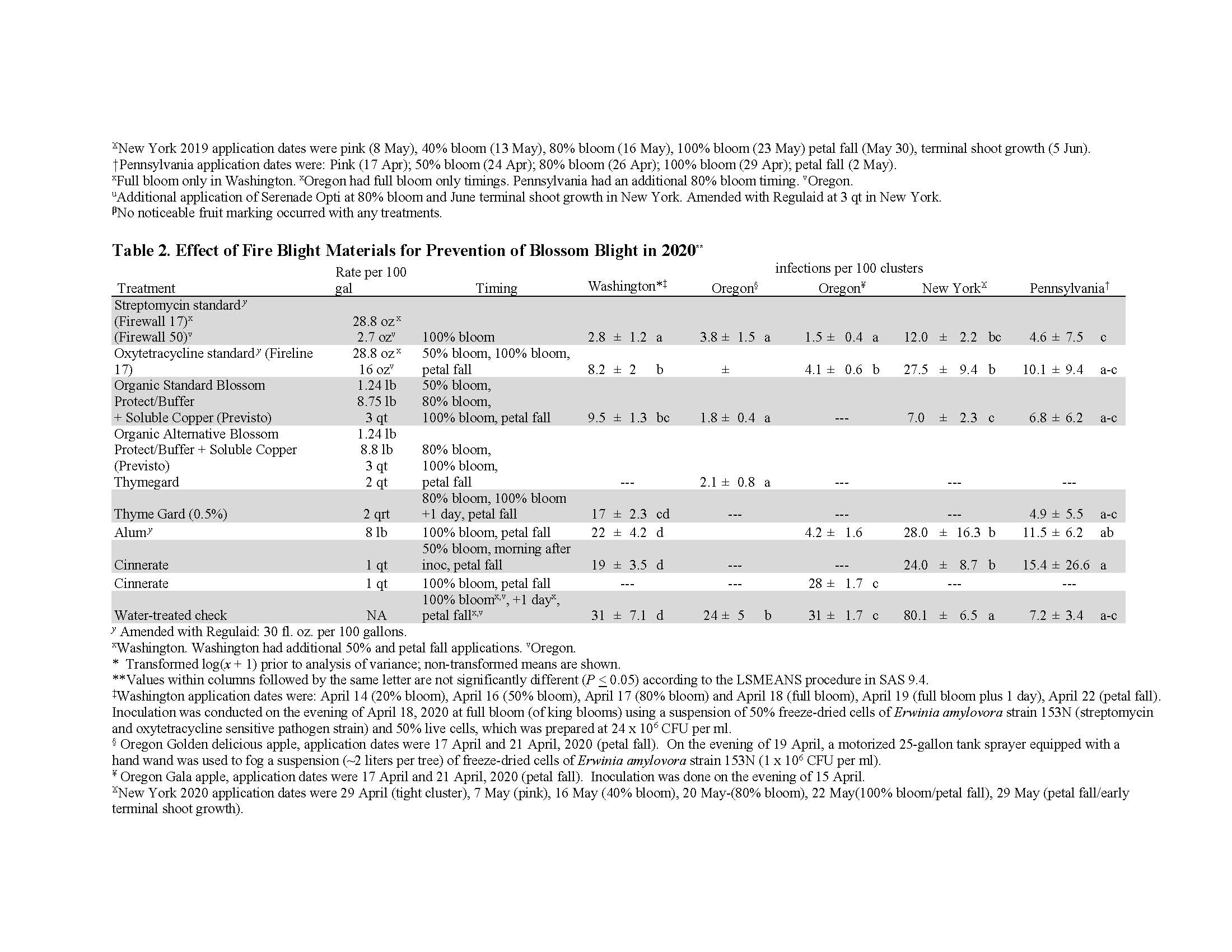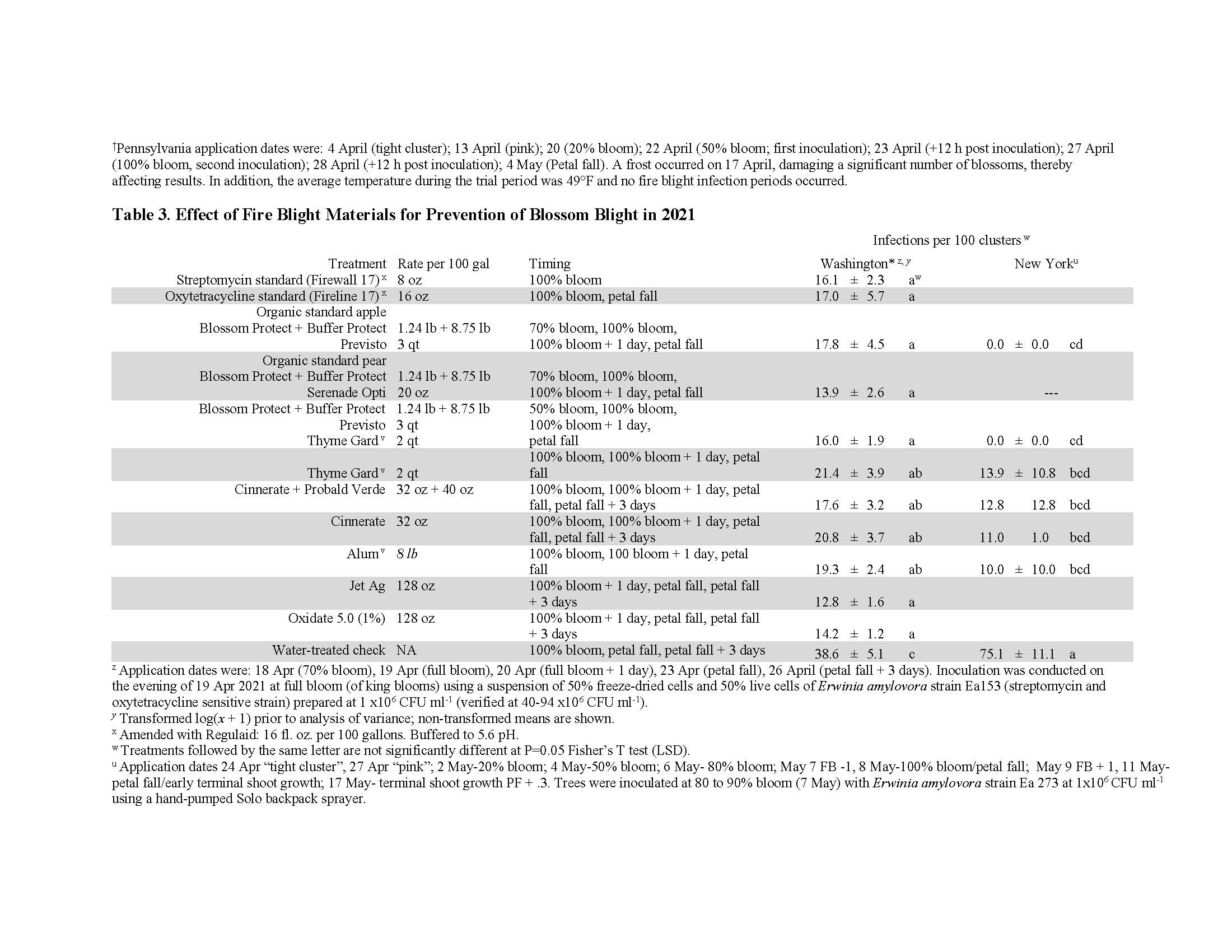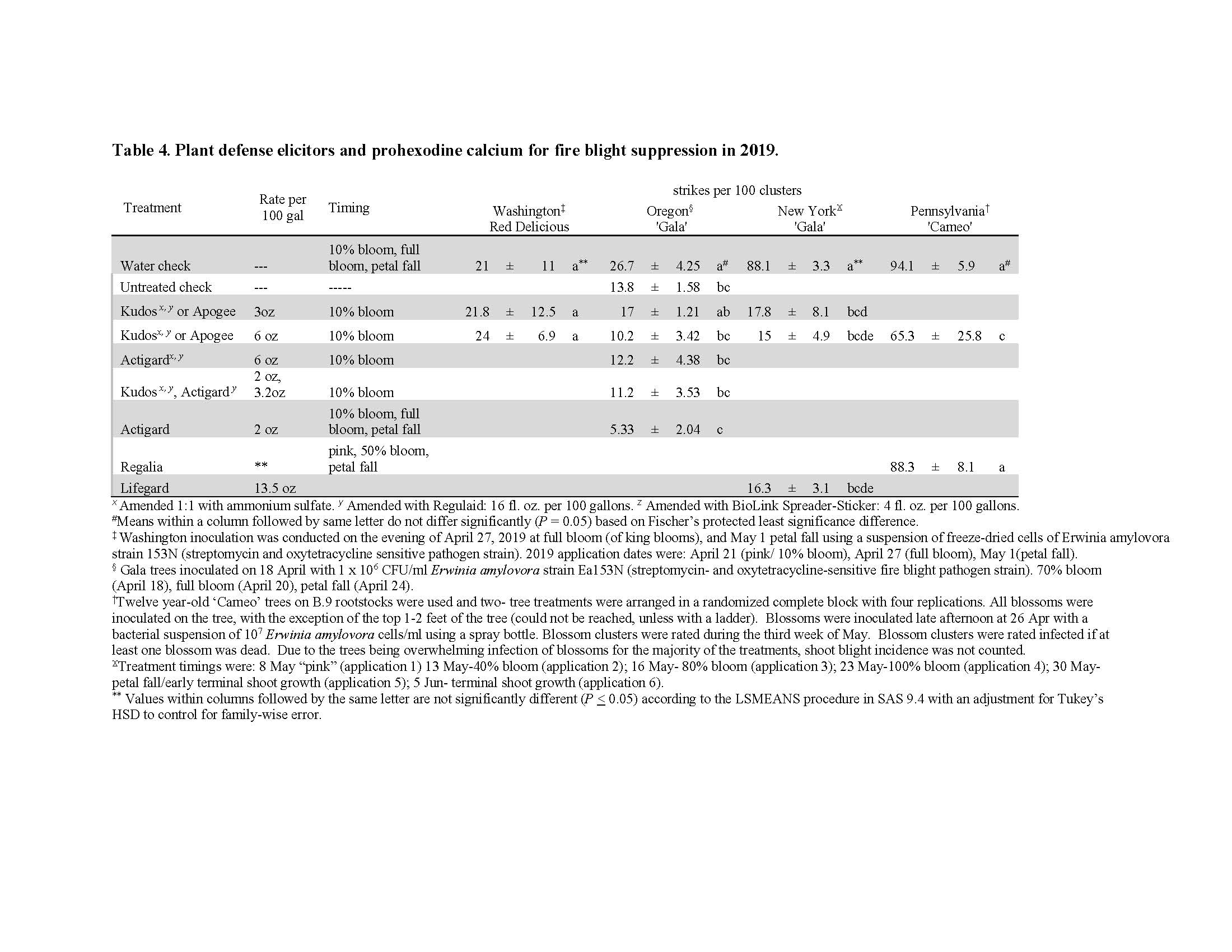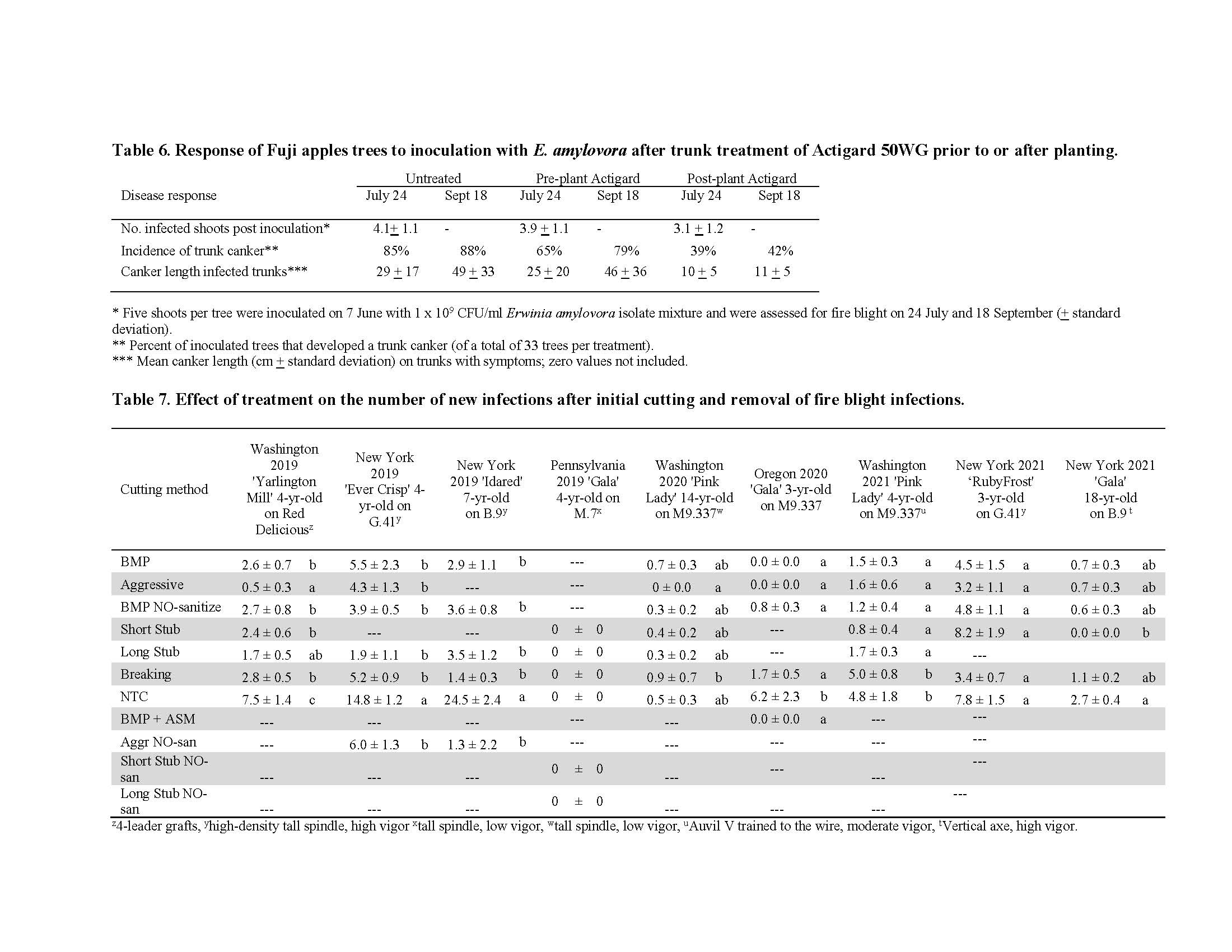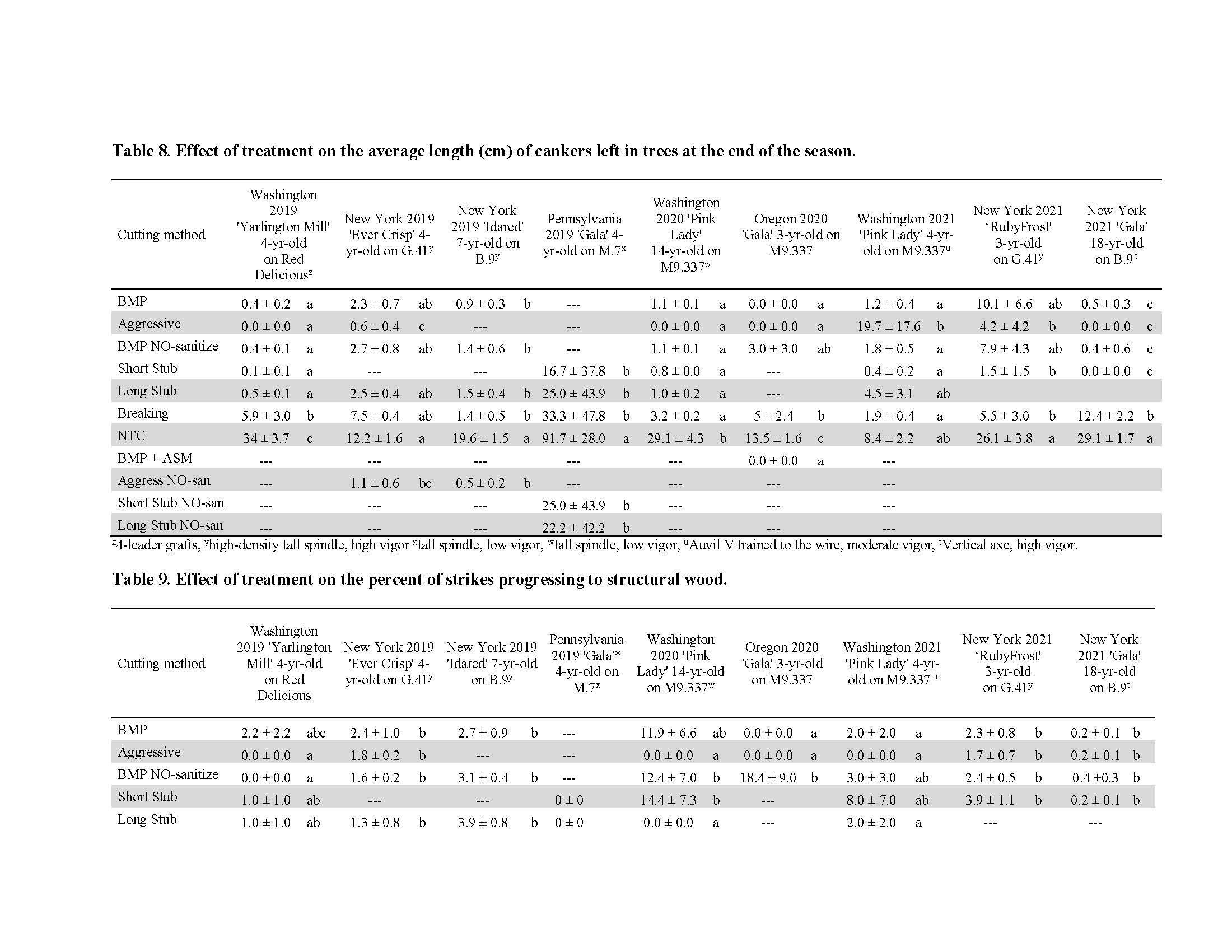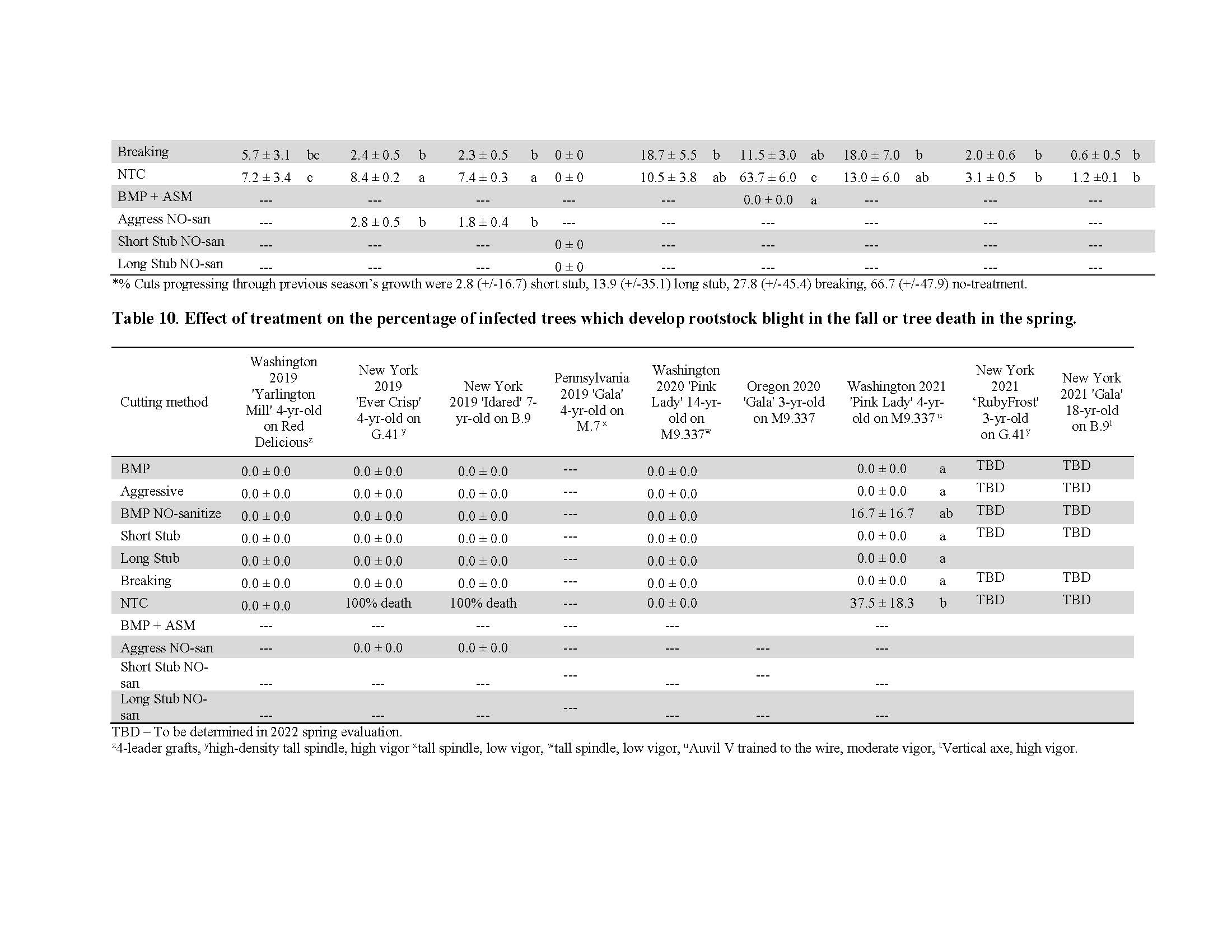Integrated Fire Blight Management
Author: Tianna DuPont
Published: 2022
Summary: Fire blight is serious disease affecting apple and pear caused by a bacterial pathogen which infects blooms and shoots resulting and can result in tree death. In 2019 and 2020 a multi-state collaboration was initiated between Washington, Oregon, New York and Pennsylvania. Trials focused in three areas: 1) test materials to prevent bloom infections including biologicals, tank mixes, and mixes with bioregulators, 2) demonstrate management strategies for young trees including coppers, plant defense elicitors, and prohexodine calcium (PhCa) and 3) test cutting strategies to manage blocks once they are infected. In trials testing biopesticide ability to prevent bloom infections alum performed well in 7 of 8 blossom blight prevention trials in WA, NY, PA and OR. Thyme and cinnamon oil products provided intermediate control. Thyme oil products performed well as part of an organic program with Blossom Protect and soluble copper when applied at petal fall. The 40 oz rate of Serenade Opti performed no better than the 20 oz standard for blossom blight control. For protection of young non-bearing trees flower removal was best followed by 3 weekly applications of soluble copper (Previsto/Cueva) at 3-4 qt/ A or basic copper 1.5 lb/100 gal. Prohexadione calcium (Apogee/Kudos) performed best when applied 2 weeks before inoculation. 6 oz or higher rates may be important in WA/OR compared to success at the 3 oz rate in NY. In a replacement tree trial in OR only 42% of trees treated 3 days before infection with Actigard (vs 88% untreated, 79% preplant) developed trunk cankers. In trials comparing cutting treatments to remove fire blight infected tissue timely summer cutting of fire blight infections significantly reduced the number of trees which developed rootstock blight and died from fire blight infections. The standard best management fire blight cutting practice where cuts are made 12 inches from the edge of the noticeably infected tissue into 2-year or older wood with sanitized loppers significantly reduced the number of new systemically caused infections compared to no-treatment controls in 8 of 9 case study trials. While Breaking treatments provided a fast fire blight removal method it left many cankers in the orchard which provide a source for infection in subsequent years. In 2 of 4 case studies cutting which left a 5-inch Long Stub from structural wood significantly reduced the number of cankers on structural wood compared to flush cut or 1-inch stub.
Keywords:


